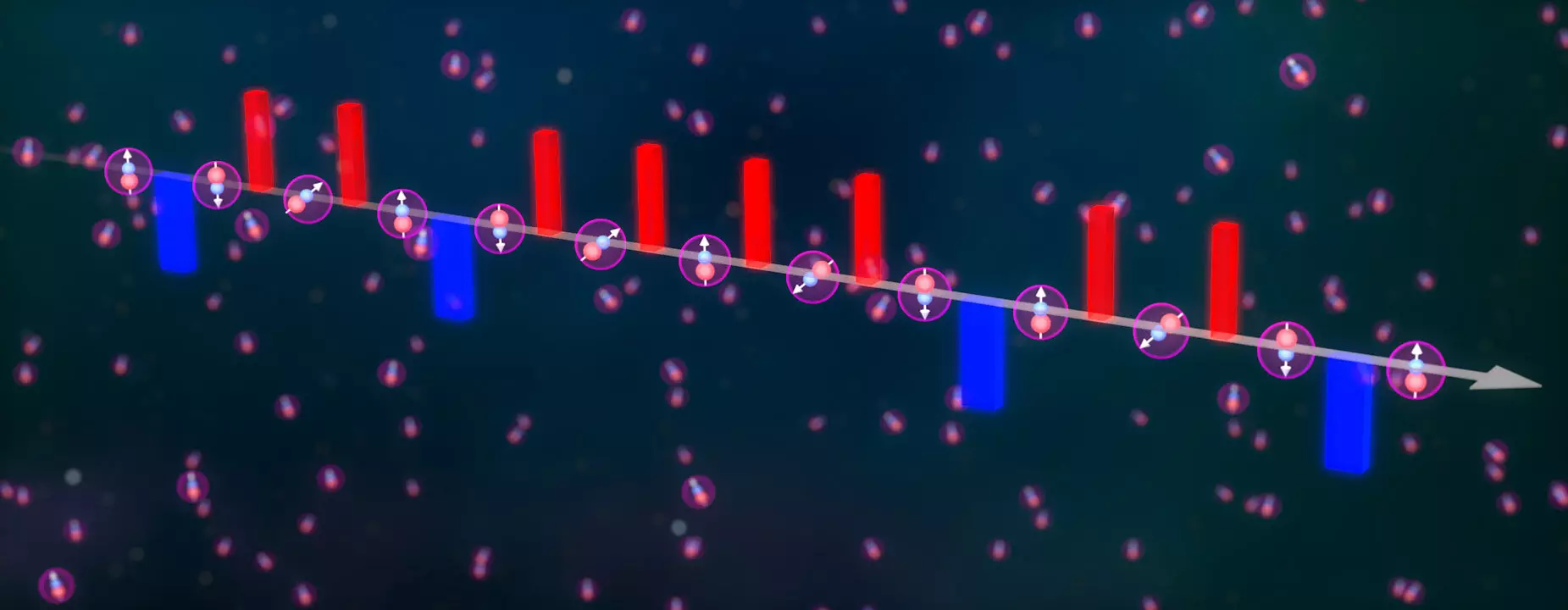Quantum mechanics, with its complex behaviors, continues to invoke fascination and challenge for physicists, particularly in the realm of quantum spins. These interactions are not only crucial for understanding the fabric of the universe but also hold the key to a myriad of technological advancements, especially in the development of quantum computing and sophisticated sensing technologies. Central to this inquiry is the study of polar molecules and their unique properties, which have emerged as significant players in quantum simulations. However, replicating and controlling these interactions in laboratory settings has proven increasingly challenging due to the intricate nature of quantum systems.
Recently, a compelling breakthrough from the laboratories of JILA and NIST, in collaboration with Mikhail Lukin’s team at Harvard University, has provided insight into this complexity. The team, led by Professor Jun Ye, harnessed a cutting-edge method known as Floquet engineering to manipulate the interactions among ultracold potassium-rubidium molecules. By deploying periodic microwave pulses, researchers fine-tuned these interactions, laying the groundwork for a powerful experimental platform suitable for delving into fundamental magnetic phenomena.
Utilizing polar molecules enables scientists to tap into a rich energy landscape that is sensitive to a variety of physical constants. JILA graduate student Calder Miller emphasized the potential of these engineered polar interactions not only to uncover novel quantum behaviors but also to enhance sensitivity to new physical phenomena. This advance opens avenues for studying other complex quantum many-body systems, potentially rewriting aspects of quantum physics.
Floquet engineering is conceptualized as a “quantum strobe light” that illuminates the field of quantum mechanics by offering a novel method to drive interactions. This technique allows researchers to apply sequences of microwave pulses that can induce desired quantum effects within the system. The analogy extends to how the human eye perceives motion; by adjusting the frequency and intensity of these “strobe” pulses, scientists manipulate the interplay between quantum particles akin to altering visual perceptions of movement.
The technical achievements here are substantial, particularly the creation of an FPGA-based arbitrary waveform generator. Annette Carroll, another graduate student contributing to this research, explained how this development allowed the application of thousands of microwave pulses. This advancement opened a window to engineer noise-reducing pulse sequences and fine-tune the molecular interactions, significantly enhancing the mechanistic understanding of quantum behaviors.
In an inspired process, the researchers first encoded quantum information into the two lowest rotational states of the potassium-rubidium molecules. This initial step involved inducing a quantum superposition through a microwave pulse, setting the stage for more complex interactions. By employing Floquet engineering, the team could modify specific quantum interaction models — notably, the XXZ and XYZ spin models. These models are fundamental as they govern how quantum spins behave within magnetic systems.
Understanding quantum spins can be metaphorically represented through dance, where molecular “dancers” adapt their movements based on their interactions with others. The manipulations performed via Floquet engineering created distinct changes in these molecular dance patterns, verified by the system’s response to adjusted interactions. The researchers successfully demonstrated that their pulse sequences could replicate intricate spin dynamics traditionally modified through electric fields and achieve interaction profiles that would remain unattainable otherwise.
One of the study’s remarkable findings was the observation of two-axis twisting dynamics, a phenomenon that allows for the creation of entangled states crucial for advanced sensing applications. The excitement in the lab upon witnessing the early signatures of this complexity echoes the significant breakthroughs in physics theory proposed as early as the 1990s. The ability to manipulate quantum spins along multiple axes enhances quantum states and reduces uncertainty — a principle beneficial for applications in precision measurement and quantum sensing.
Though the current research did not delve into entanglement detection, it marks an important precursor for future investigations. The logical progression involves refining detection methodologies to confirm the generation of entangled states, establishing a lineage of work that bridges theoretical quantum physics with practical applications.
The implications of this research extend far beyond the confines of academic inquiry. With the implementation of Floquet engineering and the manipulation of polar molecules, the ethereal world of quantum physics is inching closer to tangible applications that could redefine technological paradigms. As researchers like Ye and his team progress, they not only stand on the shoulders of established theory but also beckon a new era of discovery that promises to enhance our understanding of the quantum realm.


Leave a Reply